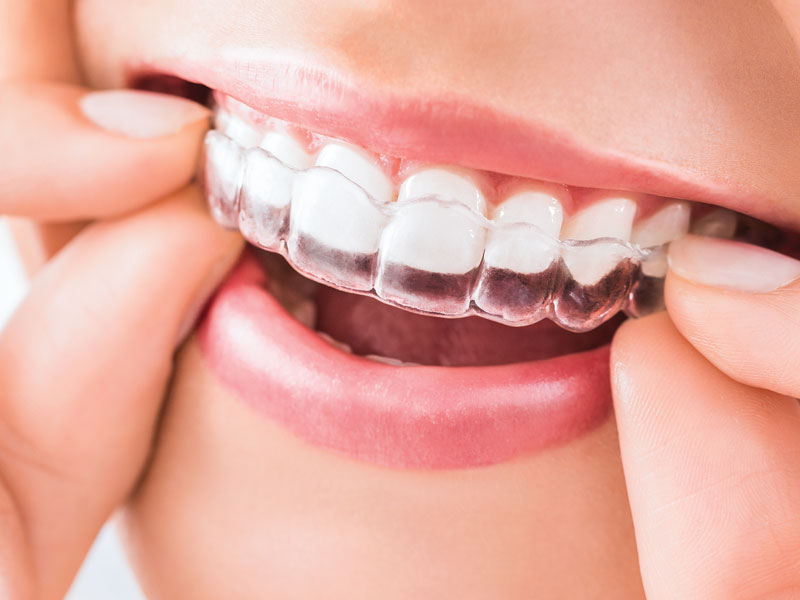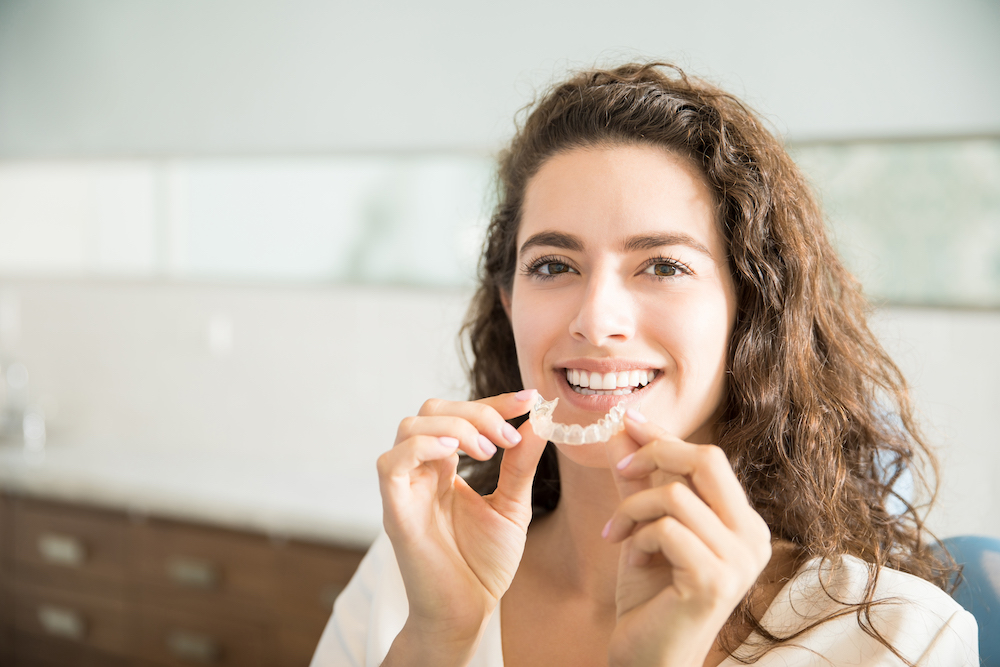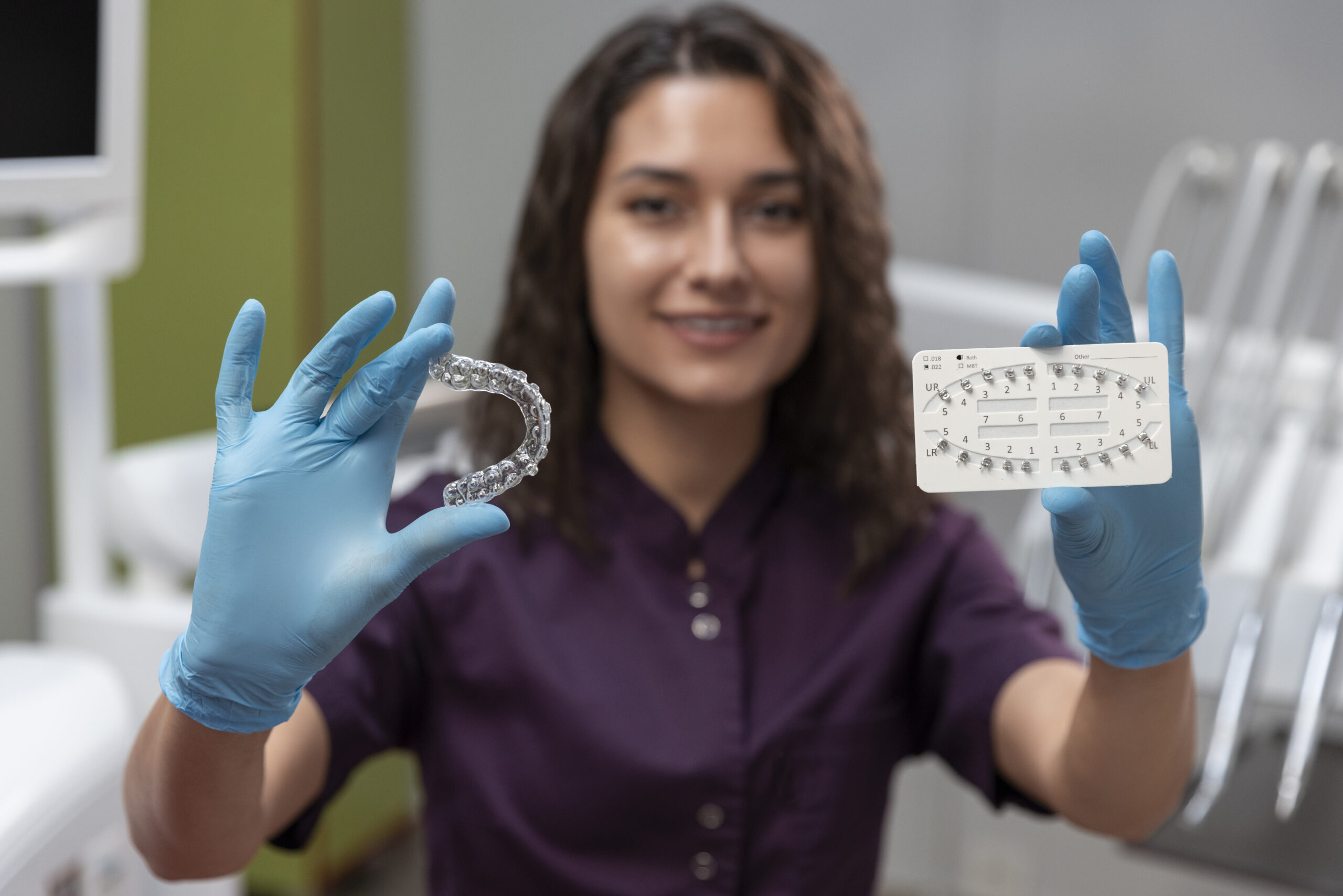Your Comprehensive Guide to Achieving a Confident Smile in Orthodontics
We all know how important a confident smile can be. It can affect our relationships, job opportunities, and overall quality of life. Orthodontic treatment can help you achieve that confident smile by correcting issues such as crooked teeth, overbite, or underbite.
Orthodontics is all about aligning your teeth and jaws to give you a healthy, functional, and beautiful smile. Depending on your specific needs and preferences, your orthodontist may recommend different types of treatments such as braces, clear aligners, or lingual braces.
So, if you’re looking to boost your self-confidence and improve your oral health, orthodontic treatment may be the perfect solution for you. Let’s dive into the details of how orthodontics can help you achieve a confident smile by exploring the various treatment options and care guidelines.
Understanding Orthodontics
Orthodontics is a field of dentistry that focuses on correcting misaligned teeth and jaws. This can be achieved by using orthodontic appliances that apply gentle pressure to move the teeth into their correct position over time. The main goal of orthodontic treatment is to improve dental health, function, bite, and aesthetics.
Orthodontic treatment begins with a consultation with an orthodontist. During this consultation, the orthodontist will examine the patient’s teeth, take x-rays and scans, and develop a treatment plan based on their specific dental needs. Orthodontic treatments can include braces, clear aligners, lingual braces, and self-ligating braces. The type of treatment recommended will depend on the severity of the dental problem and the patient’s lifestyle.
The braces treatment involves attaching brackets and wires to the teeth to gently move them into the correct position. The brackets can be made of metal, ceramic, or plastic, and the wires are adjusted over time. Clear aligners are a set of custom-made clear plastic trays that are worn over the teeth. The aligners are changed every few weeks, gradually shifting the teeth into their correct position. Lingual braces are attached to the back of the teeth, making them invisible from the outside. Self-ligating braces use clips instead of elastic bands to hold the wires in place, reducing friction and making the treatment more comfortable.
In conclusion, understanding orthodontics is essential to achieve a confident smile. Orthodontic treatment involves various procedures that are designed to straighten teeth and align jaws. Braces, clear aligners, lingual braces, and self-ligating braces are all effective treatment options that can help improve dental health and aesthetics. Consultation with an orthodontist is the first step towards determining the best course of action for achieving the desired result.
The Process of Getting Orthodontic Treatment
Getting orthodontic treatment may seem daunting, but understanding the process can help put your mind at ease. It all starts with a consultation with an orthodontist. During this initial visit, your orthodontist will thoroughly examine your teeth and discuss any concerns you may have.
Next, diagnostic tests will be conducted to determine the extent of treatment you need. This may include taking x-rays, photographs, and dental impressions. These tests will provide your orthodontist with valuable information needed to create your personalized treatment plan.
Before treatment begins, it’s important to prepare your teeth for orthodontic appliances. This may include cleaning your teeth, removing old fillings, and addressing any other dental issues.
Once your teeth are ready, your orthodontist will place your chosen appliance(s), whether it’s traditional braces or an alternative treatment option like clear aligners or lingual braces. During treatment, it is important to maintain good oral hygiene, avoid certain foods that can damage your appliance, and attend regular check-ups with your orthodontist to monitor progress.
While orthodontic treatment may seem like a long process, the result is a confident smile that lasts a lifetime. Remember to follow your orthodontist’s instructions, take good care of your appliance, and stick to your treatment plan, and you’ll have a beautiful smile in no time!
Braces: What You Need to Know
Braces are one of the most common orthodontic treatments and have been used for decades to correct teeth alignment problems. There are different types of braces that patients can choose from, depending on their preferences and needs. Metal braces are the traditional and most popular type of braces, consisting of metal brackets and wires, however, they are not the only option. Ceramic braces, which have clear brackets, are a more discreet alternative to traditional braces.
Regardless of the type of braces you choose, all braces have the same components. The brackets are attached to each tooth, and the wires are threaded through the brackets. Elastic bands, also known as ligatures, are used to keep the wire in place.
Maintaining braces requires some extra effort. Regular brushing, flossing, and rinsing with mouthwash are crucial to preventing plaque buildup and avoiding cavities. It’s also essential to avoid foods that can damage the braces, such as hard candy, popcorn, and gum.
Although braces require some upfront effort, they are a relatively straightforward orthodontic treatment. As long as you maintain them well, they can correct your teeth alignment issues and provide you with a confident smile that you can be proud of.
Alternative Orthodontic Treatment Options
When it comes to orthodontic treatment, traditional metal braces may not be the only option for achieving a confident smile. Clear aligners, lingual braces, and self-ligating braces are alternative treatment options that offer unique benefits.
Clear aligners, such as Invisalign, are a popular choice for those looking for a more discreet treatment option. These custom-made aligners are virtually invisible and can be removed for eating and brushing.
Lingual braces, on the other hand, are similar to traditional braces, but they are placed behind the teeth. This makes them virtually invisible from the outside and can be an excellent option for those who want to straighten their teeth without anyone noticing.
Finally, self-ligating braces use a sliding mechanism instead of elastic bands to hold the archwire in place. This means fewer adjustments and potentially shorter treatment times.
Of course, each of these alternative treatment options comes with its own set of pros and cons, and it’s essential to discuss your options with an orthodontist to determine which treatment option is best for you.
The goal of orthodontic treatment is to improve the functionality and appearance of your teeth, and whether you choose traditional braces or one of these alternative options, achieving the perfect smile is possible.
Caring for Your Teeth During Orthodontic Treatment
Maintaining good oral hygiene is crucial when undergoing orthodontic treatment. Brushing and flossing regularly will help remove any food particles and plaque that can accumulate around braces and wires. Your orthodontist will provide you with a comprehensive hygiene plan that you should follow.
In addition to regular brushing and flossing, there are some foods that you should avoid to prevent any damage to your braces. Sticky and hard foods, such as candy and popcorn, should be avoided as they can get stuck in your braces and cause discomfort.
Regular check-ups with your orthodontist are also essential during treatment to ensure that everything is progressing as planned. Your orthodontist will monitor your progress and make any necessary adjustments to your braces to achieve the best results.
Remember, the key to a successful orthodontic treatment is to maintain good oral hygiene, avoid certain foods, and attend regular check-ups with your orthodontist. Keep up with these habits even after your treatment is complete to maintain a healthy and confident smile.
Life After Orthodontic Treatment
You’ve finally made it to the end of your orthodontic treatment and have achieved a confident smile! But the journey doesn’t end here. The Retention Phase is just as crucial to maintain the results you’ve worked hard for. This stage involves wearing a retainer, which can be removable or fixed, to hold your teeth in their new positions.
Caring for Your Retainer is crucial to ensure it functions properly and stays clean. Remember to regularly clean it with a toothbrush and mild soap, and always remove it before eating to prevent damage.
The Life-Long Benefits of orthodontic treatment go beyond aesthetics and extend to your overall oral health. By achieving a properly aligned bite, you reduce the risk of dental issues such as gum disease, tooth decay, and premature wear of teeth.
So, continue to follow good oral hygiene habits, attend regular check-ups, and wear your retainer as directed. You’ve made a long-term investment for a confident, healthy smile, and it’s important to maintain it for life. Congratulations, and keep smiling!
Conclusion
You deserve to smile confidently and show off those pearly whites. After all, orthodontic treatment can do wonders for your self-esteem. With the right type of treatment and care, achieving a confident smile is well within reach. Seeking help from a professional orthodontist is a great place to start. They can guide you through the process and ensure that your treatment plan is customized to your specific needs. Remember, the benefits of orthodontic treatment last a lifetime, so take the step towards a confident smile today!



